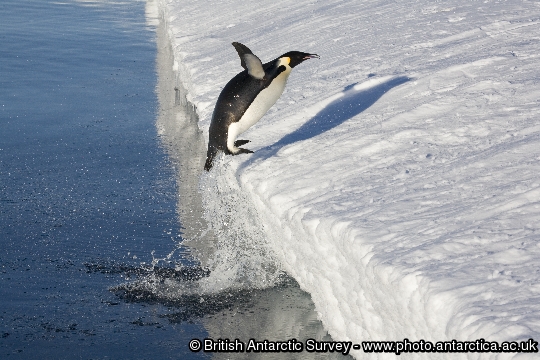Survival of the fittest – genetics reveals where emperor penguins survived the last ice age
During the last ice age, when much of the Antarctic coastline was uninhabitable due to extensive amounts of sea ice, emperor penguins probably continued to breed in just three localities.
These findings, published this week in the journal Global Change Biology, suggest that while current climate conditions may be optimal for emperor penguins, conditions in the past were too extreme for large populations to survive. In fact populations during the last glacial maximum may have been seven times lower than current population numbers.

Emperor penguins are cold-adapted, breeding on sea ice during the Antarctic winter when temperatures regularly fall below -30°C. However, the new research suggests that conditions were too harsh during the last glaciation even for emperor penguins and that the population then was divided into three refugial groups.
Gemma Clucas, from the University of Southampton and one of the lead authors of the study, explained: “Due to there being about twice as much sea ice during the last ice age, the penguins were unable to breed in more than a few locations around Antarctica.”
Jane Younger, from the Australian Institute for Marine and Antarctic Sciences and another lead author of the study, said: “Our research suggests that populations became isolated during the last ice age, pointing to the fact that these few locations could have become important refuges for emperor penguins and possibly for other species too.”
The researchers carried out genetic analyses of DNA in order to reconstruct emperor penguin population information over the past 30,000 years. Results showed emperor populations expanded rapidly after the last glacial maximum, with a high level of population mixing between colonies in the Weddell Sea and East Antarctica, and between colonies within the Ross Sea, but that little genetic exchange has occurred between colonies in the Weddell Sea and East Antarctica with colonies in the Ross Sea.
Co-author Dr Phil Trathan, Head of Conservation Biology at the British Antarctic Survey, said, “Too much sea ice during the last ice age meant the penguins were unable to breed in more than a few locations around Antarctica. Emperors need easy access to open water and stable sea ice in order to breed. Such conditions most probably were rare during the last glacial period so emperor populations decreased.”
Today emperor penguin numbers are higher than in the past. However, emperor penguins become heat stressed around 0 °C, so may exist near the upper limits of their physiological tolerance. Whether the resilience demonstrated in the past will enable emperors to adapt to projected climate change in the future remains to be seen, as rising temperatures will alter both breeding grounds and foraging habitats more rapidly than in the past.
Dr Trathan added, “By identifying and protecting potential modern day refugia, we may be better placed to help ensure this iconic species of the Antarctic has the best chance of survival. Understanding how marine ecosystems will respond to environmental change over the coming century remains a major challenge for scientists.”
